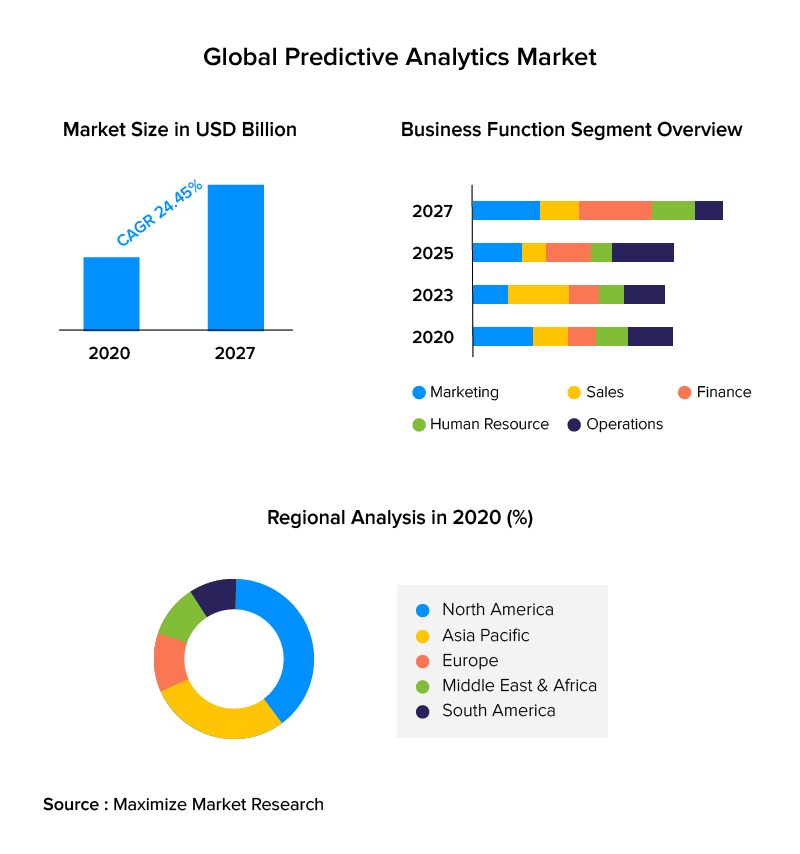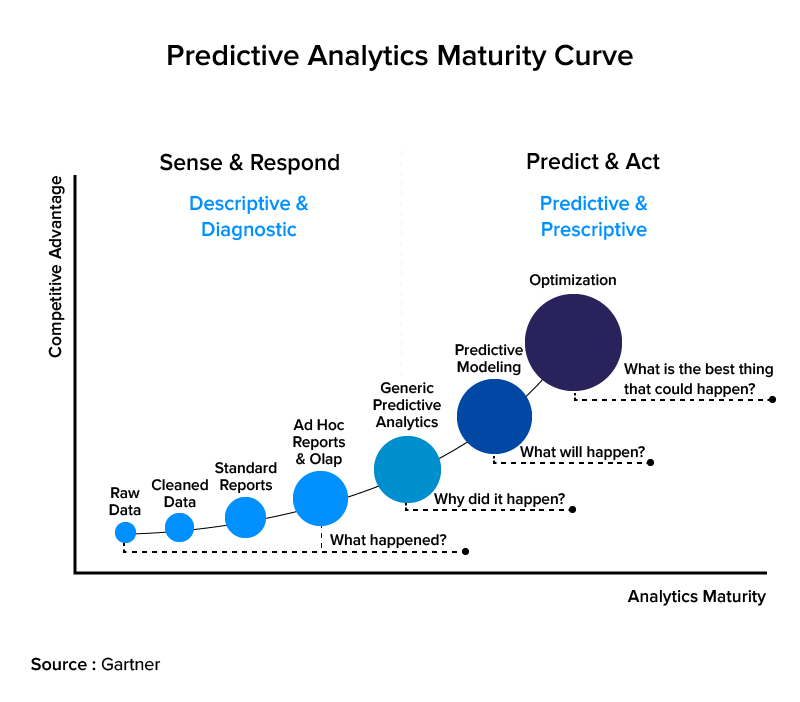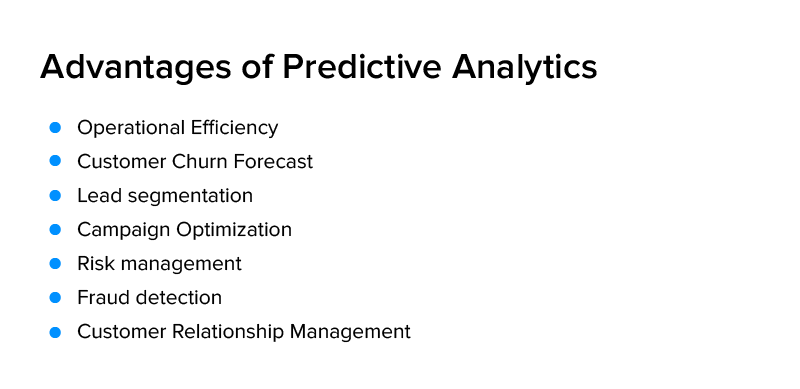Every business owner hopes that they could look into the future and figure out the best ways to invest capital and resources while setting their company for long-term success. The next best thing is to extrapolate the opportunities that lie ahead using a deep grasp of what transpired in the past. Predictive analytics enables businesses to forecast the effects of current market conditions and business activities so that owners can make well-informed choices.
As per Research and Markets’ predictive market basket analysis, the global predictive analytics market size is said to grow from USD 7.2 billion in 2020 to USD 21.5 billion by 2025, at a CAGR of 24.5% during the forecast period.

Leading firms must understand which projects are more likely to fail and how to offer them the best chance of success ahead of time to avoid making similar mistakes. PPA (predictive project analytics) is a novel approach that uses sophisticated analytics to assess a project’s chances of success.
While descriptive analytics uses historical company data to examine past performance, predictive analytics goes a step further by integrating that same historical data with rules and algorithms to anticipate an event’s likely outcome.
To minimize any consequences in your project or to figure out how to use these predictions to your advantage, Prescriptive analytics assists you in making decisions by providing intelligent recommendations for potential future actions, all of which are based on your data.
Why Are Businesses Investing In Predictive Analytics?
Predictive analytics has a wide range of applications in businesses, providing a diverse set of prospects for data specialists. Predictive analytics models use a person’s past to assist financial institutions and other organizations in determining the risks of providing services to that person.
Predictive Analytics is adopted by various organizations because it benefits various industries and businesses by empowering operations. An organization can remain on top of needs and logistics function more efficiently if it has a clear understanding of how the requirement for resources and inventories will grow over time. The supply chain can be continuously optimized by updating projections and modifying how the company delivers goods to merchants or customers.

Predictive statistics and analytics have also proven useful in the field of cybersecurity. Individuals committing fraud or breaching information are caught by algorithms that recognize patterns of behavior, including any suspicious departures from a normal user profile. Finding vulnerabilities and researching advanced persistent threats improves the security of sensitive consumer data and the organization as a whole.
For marketing departments, predictive data analytics changes the actions used by companies to interact with customers. Based on the data they have acquired, marketers determine the best next step in a relationship, sending out appropriate messages or offers. With algorithmic models, it’s becoming more feasible for organizations to detect the phase a potential buyer has reached along with a purchase journey and tailor responses accordingly.
Predictive Analytics Application For Your Business

Operational Efficiency
There are several internal touchpoints where predictive data analytics can be integrated for smoother day-to-day operations. Managers can devote resources to new initiatives based on near-perfect estimates of when ongoing work will be completed.
In a similar vein, firms might request that HR departments hire more employees if they expect increased workloads in the near future. For budgeting, demand and supply management, performance incentivization, and planning the business roadmap, accurate projections are crucial in sales.
Customer Churn Forecast
Making a churn forecast entails detecting the signals that precede your customers’ cancellation requests and evaluating the likelihood in each case.
You can use predictive models to compare data like customer service quality, customer satisfaction, and churn rate to see which aspects influence cancellation.
The idea is to figure out what’s causing the customer’s loss and then reverse the process.
Lead Segmentation
Lead segmentation techniques can also benefit from predictive analytics.
After all, mapping the profile of these potential clients in order to deliver personalized content and design-proof nutrition campaigns is one of marketing’s most difficult tasks.
You can create segmented groups based on extensive research using data and machine learning, forecasting which leads require the smallest details. You can know the estimated time, cost, and deliverables of an ML project.
Campaign Optimization
Your whole marketing campaign history can be used to forecast better future results.
Simply utilize predictive analytics project management to determine the optimal channels for each piece of content, the most effective language for each target demographic, and other factors that influence consumer acceptability.
As a result, when interacting and winning over your audience, you shoot squarely at the objective.
Risk Management
Another area that benefits directly from predictive analysis is risk management.
Isn’t it much easier to make judgments when you have a clear picture of the dangers and opportunities ahead?
Consequently, whether analyzing a customer’s credit risk or the potential implications of investment, anticipating the probability of profit or loss is the major differentiator of modern data analysis.
Fraud Detection
Companies can also use analytical methods to detect fraud patterns and avoid security breaches.
With the increased focus on cybersecurity, an increasing number of businesses are concerned about addressing vulnerabilities and detecting anomalies in a timely manner to avoid damage.


